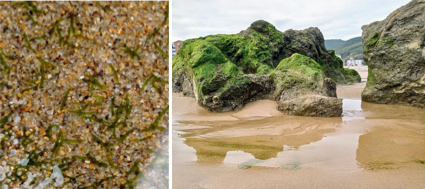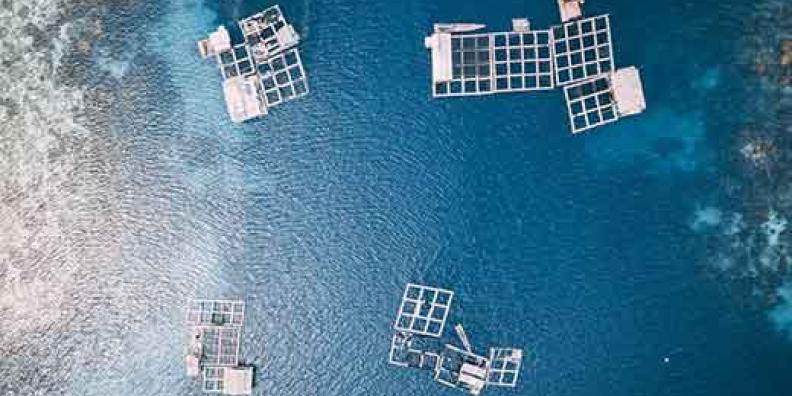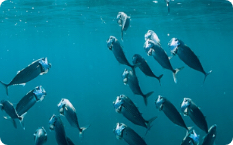
Author: Ibon Cancio, UPV/EHU Associated Professor in Cell Biology; researcher in the ‘Cell Biology & Environmental Toxicology’ (CBET) research group of the Plentzia Marine Station (PiE-UPV/EHU); Spanish scientific representative in the EMBRC Committee of Nodes
Mary Winifred Parke, born 23 March 1908 and educated in Liverpool, was an expert on marine algae. Together with a group of outstanding women who dominated the field during the 20th century, Parke shaped the course of phycological research in the UK and worldwide. Her work had a significant impact on algal taxonomy, cell biology and ecology, microalgae culture and custodianship, and was a cornerstone of modern aquaculture. To understand the context in which Parke and her female peers rose to scientific prominence, we can point to various legal developments at the time. In the UK, the Education and the Sex Discrimination Acts of 1918 and 1919 incorporated women into regular education, bringing some of them all the way to university. As postgraduate students in natural history, women were encouraged to study botany. This was considered more appropriate for young women, without exposing them to the ‘immoralities’ of animals in their struggle to survive…and to reproduce.
Parke directly benefitted from this research avenue opened to women as the world of marine algae remained largely unexplored at the time. After one year as a post-graduate student in Liverpool, she transferred to the Marine Biological Station at Port Erin in the Isle of Man, an outpost of the University of Liverpool, which opened in 1892 and was sadly closed in 2005. She worked there as an ‘algologist’, ie ‘a person who studies algae’. An outdated and slightly derogative term, it was later substituted for ‘phycologist’. In this first stint as a phycologist, Parke worked under Dr Margery Knight, her PHD supervisor. Parke’s first publication as a post-graduate student was ‘Manx Algae’ (1931), intended to provide students visiting the island with a guide of the algae in its shores.
At Port Erin, beginning in 1934, Parke became involved in a research programme on the rearing of oysters. This work was initiated by observations that developing larvae might demand a diet with small planktonic microalgae below 20 µm in diameter. Parke introduced unialgal cultures in 1937 with the isolation of new algal strains. Microalgae were very poorly understood, and they were normally labelled using letters or numbers. Parke noticed that two such strains of flagellates that she named ‘I’ and ‘M’ would be ideal for feeding oyster larvae. Spectacular improvements were observed in spat settlement in the trials conducted. The success achieved by Parke culturing her algae in Port Erin was outstanding, especially if we consider that at that time, the station had no supply of electricity to control temperature or illumination.
War then came to Europe, bringing a disruption of supplies of agar for bacteriological work. Consequently, Parke was relocated in 1940 to Plymouth at the Marine Biological Association, MBA (a current-day EMBRC UK partner). (Parke would always show love and respect for her Port Erin experience.) Female phycologists Margary Knight, Emily Caly and Parke had the wartime mission of assessing the UK’s seaweed resources and conducting experimental work on their derived products. Parke compiled systematic algal species distribution lists, which would later, and in relation to brown algae (Fucus, Laminaria, etc), be published as detailed accounts of their life histories and ecology. Comprehensive studies on dynamic aspects of seaweed morphology and life histories of algae were lacking; technical approaches to systematically analysing macroalgal growth, for instance, are among Parke’s contributions.
After the publications of the wartime lessons on macroalgae, Parke was appointed botanist at MBA in 1947, and she returned to her activities with the minute creatures that she had began isolating in the oyster ponds of the Isle of Man. This resulted in the development of the Plymouth Culture Collection of marine algae. 1949 was the year in which the ‘I’ strain got ‘her’ name: Isochrysis galbana. The eighth strain of the collection in Plymouth is still the original strain isolated by Parke. Cultures of this species are now used worldwide to feed molluscs and crustaceans for commercial cultivation in hatcheries and for research.

Then the 1950s came, and Parke would experience an era of achievements in collaboration with Irene Manton from Leeds University. This proved to be one of the most fruitful and long-lasting duos in science history. Manton was exploring the structure of the flagellum in various motile cells using the electron microscope, then a biological tool in development. Manton’s goal during her visit to Plymouth was to collect zoospores and gametes of brown algae. Instead, she found Mary Parke and her flagellates in her culture collection. The electron microscope revealed many novel morphological and cellular features (flagellar and ciliary structure, haptonema, coccoliths, Golgi apparatus) in these microalgae. Thanks to the microscope, together with Parke’s ‘green fingers’ and capacity to isolate and culture new strains resulted in a renaissance period in algal taxonomy. Together, both women identified many new species helping to establish algal phylogeny (haptophyceae, chrysophyceae, eustigmatophyceae, prasynophyceae, etc).
Further, Parke published the ‘Check-lists of British Marine Algae’ which would become her most quoted publications. The first was published in 1953, and was updated and revised in 1956, 1957, 1959, 1964, 1968 and 1976. The check-lists contained information in a systematic form. Since the British algal flora is so cosmopolitan, they are of great value for anybody interested in phycological studies worldwide.

Mary Parke was a founding member of the British Phycological Society, which she directed from 1959 to 1960 in addition to being the editor of the Society's journal, the British Phycological Bulletin. Her final recognition arrived in 1972, when she became a fellow of the British Royal Society before officially retiring in 1973. Her ‘green fingers’ and scrutinising eyes would leave us in 1989.
We will always remember Mary Parke for her pioneering work on flagellates and algal culturing techniques. Her collection, the MBA algal culture collection (she was also instrumental in the establishment of the NERC Culture Collection of Algae and Protozoa in Cambridge), consisting today of some 400 strains from 80 genera of marine phytoplankton, is part of her legacy. As in her spirit, always willing to share her strains with anybody interested in studying or using them and thus promoting advances in microbial biochemistry, physiology and more, the biological resources of the collection are accessible to researchers worldwide. ‘Green fingers’ for a ‘Blue Environment’ in a world in need of sustainable green and blue developments!



















